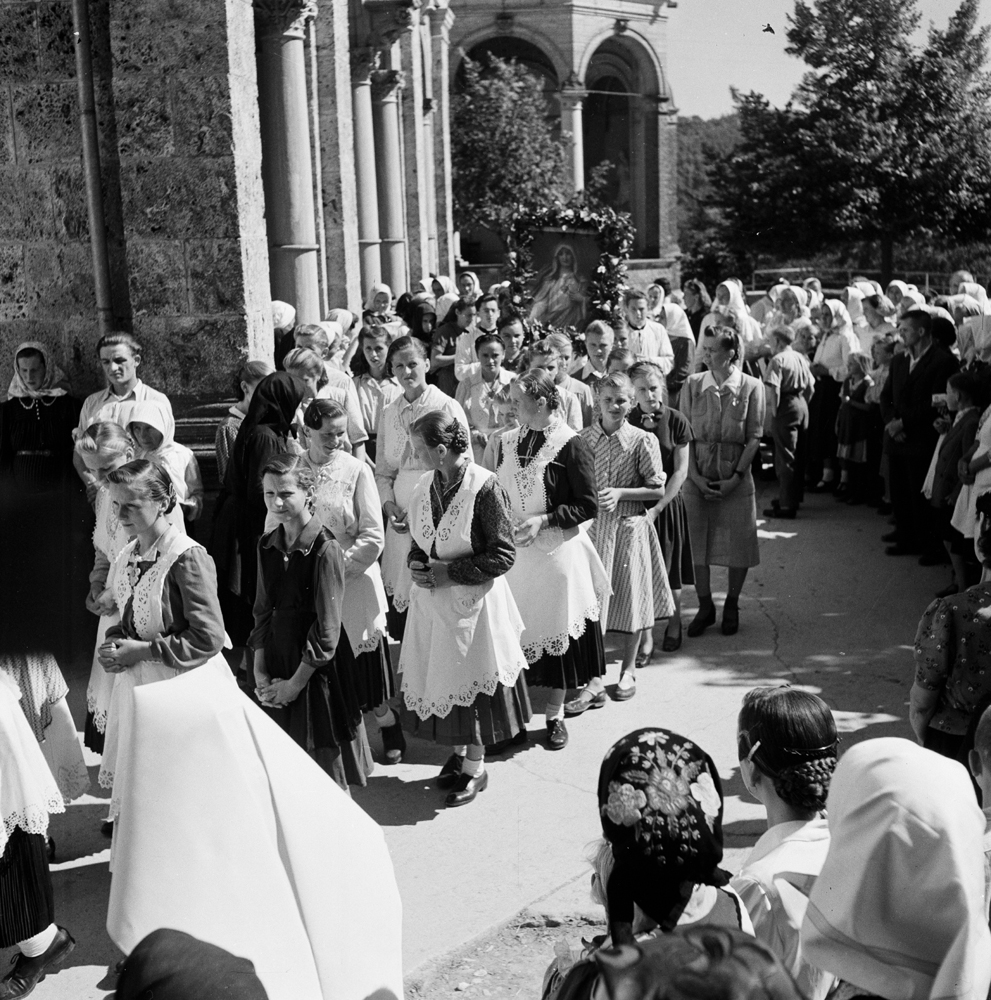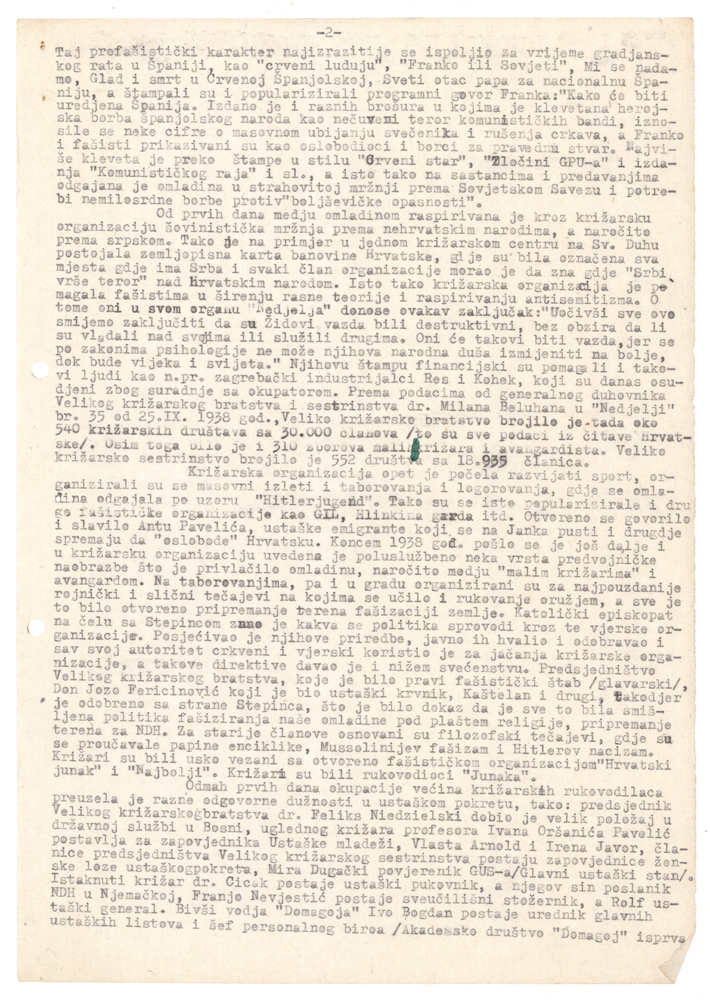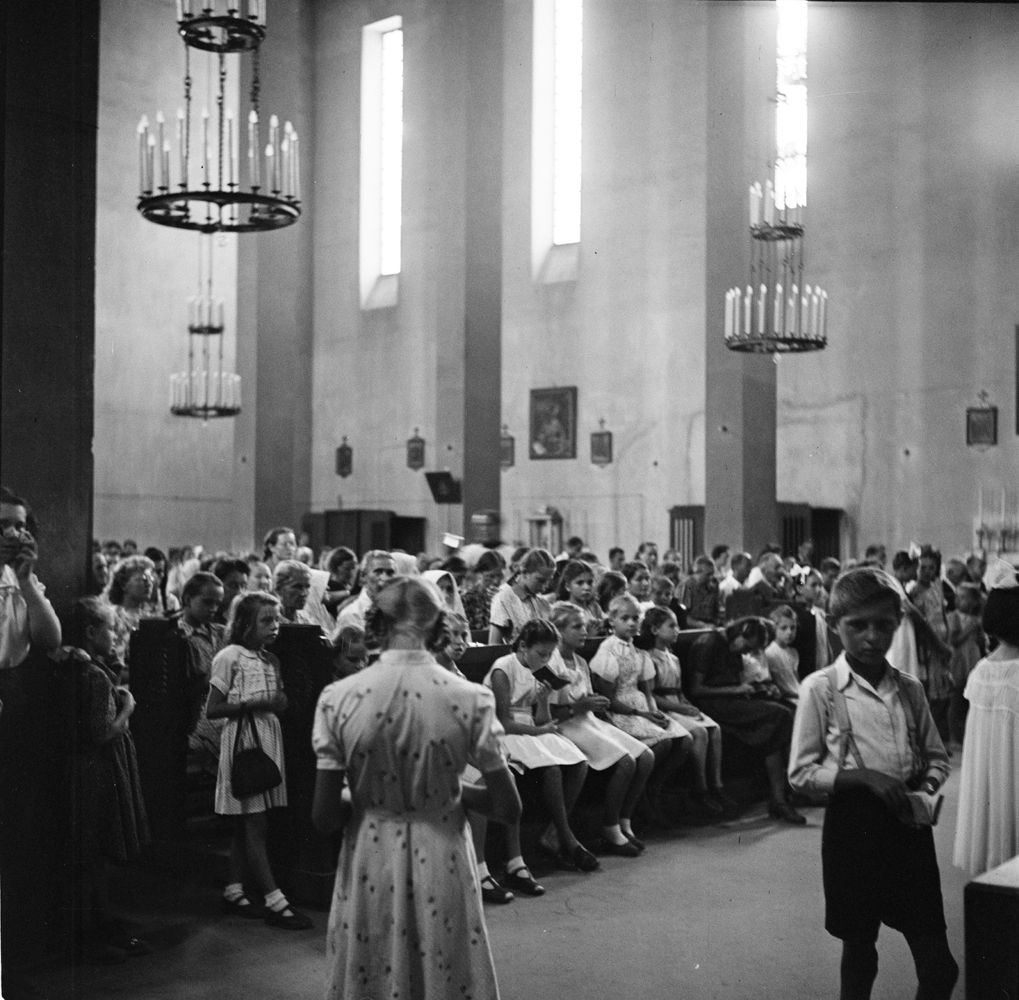This is a document that the Main Committee of the Alliance of the Communist Youth of Croatia (ACYC) from Zagreb sent to the Central Committee of the ACY of Yugoslavia in Belgrade with information on the activities of the Catholic Church and its organizations (the Crusaders), who were active in that period, and their influence on the youth. Although the report elaborated on the activities of the Church and its organizations since 1930 and during the period of the Independent State of Croatia (NDH), this section refers to the period from 1945 to 1946. The review of opposition activity is shown by administrative and territorial criteria: the city of Zagreb, Varaždin County, Bjelovar County, Osijek, and Dalmatia. In the report, the activities of young people in church organizations and associations are explicitly defined as opposed to the regime, and these youth groups, under the leadership of priests, are also associated with affinity for the Ustasha regime. The document describes the impact of the Catholic Church on the youth in youth halls, schools, house parties and various church activities. In this report, emphasis was placed on the activities of youth choral societies or church choirs under the guidance of nuns or priests and gatherings of young people in the associations such as "Mary's Congregation," "Mary's Daughters," "Sacred Heart of Jesus," "St. Joseph," etc.
Through the ACYC as their transmission, the authorities responded to these phenomena in an extremely negative manner, attempting to halt the Catholic Church's influence on young people and suppress activities contrary to communist ideology, which were in fact most prominently carried out by the Catholic Church.
The document was drawn up by the ACYC Main Committee, whose archival records, along with the records of other so-called socio-political organizations, were until 1995 a part of the Archives of the Institute of History of the Croatian Workers' Movement/Institute of Contemporary History. In July of that year, the archives were handed over to the Croatian State Archives (CSA), where they are kept today. It is not known whether this document has been used by researchers.
The archives are regularly used by the researchers for scholarly publications, which was the case for this report as well.




